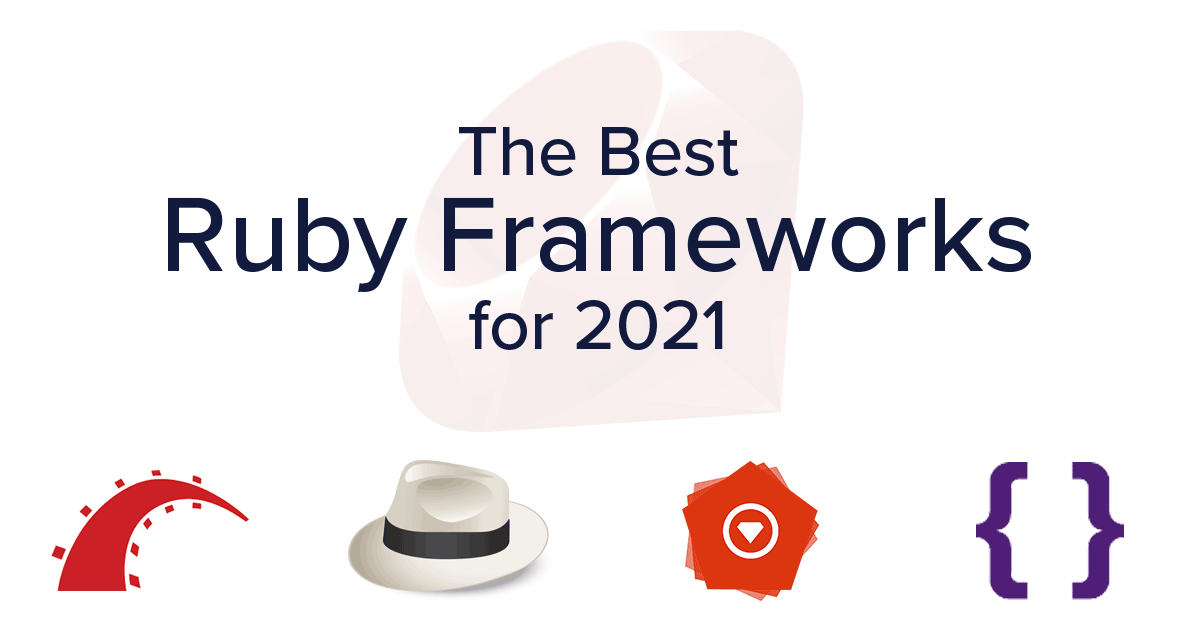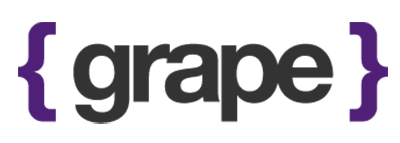
GSD
Discover the Best Ruby Frameworks for 2021 (4 Great Options!)
Posted by Paweł Dąbrowski on October 6, 2023
Software developers who work professionally with Ruby are typically up to date with all of the current options for Ruby frameworks, Ruby CMS products, and Ruby plugins. But there are plenty of developers who still think Ruby on Rails is the only framework available for Ruby.
Although Rails is still the most popular framework, there are a few more tools that are worth using when building applications with the Ruby programming language.
This article guides anyone looking for a Ruby toolset with which a web application can be quickly crafted and released for a broader audience. Moreover, version 3 of Ruby is now available for all developers, so it is a perfect occasion to give it a try and build something extraordinary. If you are not sure yet what tool to use, jump on board, and I will show you the most exciting options.
Table of contents
The criteria for the best framework
Before showing you the most exciting options for Ruby frameworks, you have to think for a second about your goal. It is essential to define our needs to pick the best tools. Often developers can use a more specialized tool with fewer features available, but which are faster to use and maintain.
To help you make a more informed choice, I was guided by the following aspects when choosing frameworks:
- Popularity - it is essential for any solution to be used by as many developers as possible, not for the fame but to test the code with real production applications under a real-world load.
- Maintenance level - nobody wants to use outdated software as it is not secure and not as performant as possible. Actively maintained libraries and tools are often updated with better code and more useful features.
- Friendliness - a useful tool may not be used right if the documentation is not clear. It is crucial to have a good technical information source that will allow us to use the code in a more advanced way.
There is one common thing that connects all the Ruby frameworks that I have selected and shown below. They all make the most of Ruby's awesomeness and make the web application creation process simple, fast, and extremely satisfying.
4 Ruby frameworks worth trying in 2021
I selected 4 Ruby frameworks that seemed to be most interesting from a business and developer’s satisfaction perspective. My choices take into account both small and large enterprise applications so everyone can find something for themselves.
Ruby on Rails
The most popular Ruby framework, it is perfect for building smaller websites and huge enterprise applications that serve millions of requests daily. The solution is very actively maintained, which results in many useful features with every new release.
Main features
Ruby on Rails has everything included to build a fully working web application without installing external libraries:
- Database support - it’s very easy to use any database engine, manage the database structure, and manipulate the data inside the database’s tables by using special classes called models
- WebSockets - thanks to the ActionCable, you can easily use WebSockets in your application to create real-time features that users will love
- Frontend friendly architecture - with Rails, you can use any frontend framework to build a modern web application that provides an interactive and friendly interface for users
- API version - you can create a lightweight API application without modules and code used for web applications, and it does not require much configuration
Example applications
Rails is used everywhere, and it means that applications built with this framework are used in e-commerce, banking, social networking, and many more sectors. Choose Rails if you would like to create the following applications:
- E-commerce platform - serve many users and accept thousands of orders without issues on the performance and practical side. The Shopify platform is the best example of the framework’s usage in that area.
- Fintech applications - built-in support for features protecting against common security threats and detailed logging solutions makes the framework the perfect choice for building applications for the banking industry.
- Social networks - the ecosystem of libraries that can be used with Rails is vibrant and valuable, which makes the creation of services focused on social life quite simple and effective.
- CRM systems - Rails makes it easy to deal with an extensive set of data thanks to the ActiveRecord library that provides a simple and intuitive interface to manage databases.
Hanami
Hanami is the type of framework where batteries are included, which means that you don’t have to use any external libraries to build a fully functioning web application.
Main features
The set of features that the framework provides make it an excellent alternative to Rails:
- Good optimization - the source code and architecture was designed to assure fast response times measured in milliseconds.
- Lightweight components - the framework provides over 100 useful features for the more immediate building of applications but does not consume more memory simultaneously. You don’t have to choose between good performance and rapid development time.
- Built-in security mechanisms - applications created with Hanami rely on the latest browser technologies and have built-in features for protecting an application’s users against the most common security threats.
- Generators - with the command line features, you can quickly generate standard code for requests, database migrations, and mailers.
Example applications
With Hanami, you can build any web application that can be made using Ruby. The following types of architectures can be easily created:
- Fast API applications - Hanami provides a separate library for building API applications, and its solution is the quickest solution among available Ruby frameworks.
- Rich web applications - assets, mailers, validators, and models built-in support makes it easy to develop rich web applications that provide a set of useful features for end-users.
Sinatra
Sinatra is a very lightweight framework, but it is a perfect choice for API-based applications and web applications. It provides a friendly and straightforward DSL, which allows creating applications very quickly.
Main features
The source code of Sinatra consists of 2008 lines, a tiny number of code lines for a useful library. However, it’s not an obstacle for this framework to provide a set of features:
- Rich templating system - it is possible to use a variety of template languages including HAML, erb, Nokogiri, SASS, LESS, and many more.
- Helper methods - the code can be refactored and organized into helpers available in both routes definitions and templates code.
- Support for static files - stylesheets, images, and javascript files can be included in the application without exposing them to public access.
- Request manipulation toolkit - the framework provides a code for easy caching, redirections, and session management
Example applications
You can use Sinatra as an alternative for Hanami and Rails frameworks. The framework allows for the rapid development of the following types of applications:
- Simple websites - thanks to the flexible templating settings and rich routing DSL, you can quickly build a simple website that serves content with HTML code and CSS styles.
- Web applications - you can create more complex applications that connect to databases and interact with users without losing performance.
- API application - easy DSL and transparent routing make the API applications creation process more comfortable than ever. Thanks to the lightweight codebase of the framework, systems built with Sinatra are high-speed and reliable.
Grape
Grape is not a direct competitor of Rails or Sinatra; it’s more like a compliment for mentioned frameworks when building the API. Like Rails, it runs on Rack and provides a simple DSL to easily and quickly develop fully working RESTful APIs that can be used by customers, other backend applications, or as an interface for the frontend application.
Main features
Grape is a little tool, but it’s an excellent solution for building APIs and using the existing application built with a different framework. The most interesting and useful features include:
- Easy integration - you can easily mount a Grape application into the application built with Rails or any other built on top of the Rack.
- Simple versioning - by passing a version number as a parameter, header, or part of the path, you can easily choose which version of the API you would like to use.
- Extendability - the framework has built-in support for authentication, different API formats, and allows the mounting of middleware.
- Validation support - the framework provides validation of parameters in over ten supported types.
Example applications
These days, API applications are an essential part of almost every web application. They provide a programmatic way of exchanging and reading data through a client’s web application written in a different technology.
With Grape, you can build the following applications:
- Standalone API application - expose API endpoints and connect to the database without any other web framework.
- API application as a part of the existing application - you can mount a Grape application into an existing and already working web application to extend its functionality.
Summary
Ruby is still an excellent choice for building a web application in 2021. If you plan to develop an extensive web application providing lots of features, Rails and Hanami are the best tools. When you need a simple website, Hanami and Sinatra give the best value when comparing available solutions and performance. In terms of building API applications, all the frameworks mentioned in this article will be a good choice.
Although I mentioned only four frameworks, there are many more tools used in the Ruby community. They are less known but still used for building specific applications focused on satisfactory performance and simplicity.
If you're looking for a powerful and versatile Ruby CMS, look no further than ButterCMS. Butter provides a simple and friendly user interface that allows your marketing team to own every aspect of the content in your web application. It was built API-first and it's platform-agnostic, so you'll have a great experience no matter which Ruby framework you decide to use. Check out our simple Ruby quickstart to get up and running in minutes.
ButterCMS is the #1 rated Headless CMS
Related articles
Don’t miss a single post
Get our latest articles, stay updated!


















Paweł is a self-made writer of the digital era, IT samurai and problem solver who loves Ruby. He writes for human beings and computers at pdabrowski.com and focuses on soft skills in the software creation process.